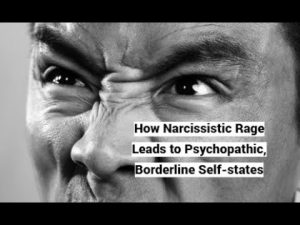- 1.1 1. Borderline Personality Disorder (BPD) and Psychopathy
- 1.2 2. Narcissistic Personality Disorder (NPD) – Gender Comparisons and Traits
- 1.3 3. Histrionic Personality Disorder (HPD) – Characteristics and Current Understandings
- 1.4 4. Substance Use and Personality Disorders
- 1.5 5. Diagnostic Considerations and Biases
Predatory Women (Compilation 1 of 2)
1. Borderline Personality Disorder (BPD) and Psychopathy
- Borderline personality disorder (BPD) may represent a form of secondary type psychopathy, especially in women, characterized by emotional dysregulation, impulsivity, lack of empathy, and antisocial behaviors similar to psychopathy [00:00].
- BPD patients often dissociate under stress, invoking an inner psychopath state with dissociative symptoms such as depersonalization, derealization, and amnesia [08:20].
- The relationship dynamic between borderlines and other cluster B personality disorder partners (e.g., narcissists, psychopaths) can devolve into abusive power plays with mutual mind games and trauma exacerbation [07:20].
- Dissociation in BPD functions to distance the self from painful or conflicting emotions and events, often triggered by anticipated or real abandonment and rejection [09:00].
- BPD characterized by inner conflict between two selves (true and false), similar to dissociative identity disorder. This conflict differs from narcissistic personality disorder where the false self dominates entirely [22:30].
- Borderline alters can include a secondary psychopath state manifesting antisocial, impulsive, disempathic, and deceitful behavior, including lone wolf tendencies not seen in other borderline forms [14:40].
- The disorder overlaps significantly with trauma and dissociation, suggesting BPD as a trauma-related dissociative condition with various cluster B manifestations unified by trauma [26:20].
- Treatment challenges: BPD is resistant to treatment of comorbidities and core symptoms, unlike other cluster B disorders [34:00].
2. Narcissistic Personality Disorder (NPD) – Gender Comparisons and Traits
- Narcissistic personality disorder affects mostly males in prevalence but male and female narcissists share core psychopathology with different emphasis: men focus on status and power, women focus on body, sexuality, and traditional gender roles [28:00].
- Female narcissists often exploit socially and culturally defined femininity to secure narcissistic supply, particularly through children and homemaking roles [29:30].
- Both genders rely heavily on social validation and conformity, making them sensitive to societal opinions; narcissists may seek punishment due to guilt but still operate within traditional social roles [30:45].
- There is little core psychopathological difference between male and female narcissists besides their sources of narcissistic supply [32:10].
- Cultural and gender socialization plays a role but no strong hormonal or physiological correlation to malignant narcissism is found [33:30].
3. Histrionic Personality Disorder (HPD) – Characteristics and Current Understandings
- Histrionic personality disorder is characterized by exaggerated attention-seeking, emotionality used as manipulation, performative behaviors, and flirtatiousness [41:00].
- Recent research challenges old gender biases suggesting HPD may be equally prevalent among men and women, but diagnostic bias persists [44:00].
- HPD emphasizes body and sex as tools for attention; these patients often somatize emotions and show body-related symptoms and comorbidities [45:20].
- HPD patients commonly disfavor sex despite hypersexual signaling; many suffer from sexual dysfunctions like vaginismus which worsen with age [50:40].
- Studies reveal HPD is not strongly linked to substance abuse or addiction, unlike antisocial and borderline personality disorders [55:30].
- HPD is associated with rigid self-control, not impulsivity or disinhibition in substance use or internet addiction, contrary to stereotypes [56:50].
- Emotional and physical abuse in childhood predicts HPD traits differently by gender, indicating the need for gender-tailored clinical interventions [58:50].
- Alcohol use severity in HPD is uniquely associated with positive expectancies of alcohol effects, indicating a different impulsivity profile than other cluster B disorders [60:40].
- The disorder seems ultimately driven by power dynamics via seduction, emotional blackmail, and emotional displays to manipulate others and regain control [61:40].
4. Substance Use and Personality Disorders
- Antisocial and borderline personality disorders are strongly linked with substance abuse including caffeine, cocaine, and alcohol use [53:45].
- Genetic studies indicate some shared genetic risk factors between caffeine use and personality disorders, excluding histrionic personality disorder [54:20].
- Cocaine use is significantly predicted by antisocial personality traits (72%) and moderately by borderline personality traits (25%) [55:00].
- Unlike other cluster B disorders, HPD shows limited connection to caffeine and cocaine use, reinforcing the idea that it differs in impulsivity and substance abuse vulnerability [55:40].
5. Diagnostic Considerations and Biases
- There is ongoing recognition of gender and race biases in psychological diagnoses. HPD diagnoses have historically been gender biased, conflating men with narcissism and women with histrionic or borderline diagnoses [44:30].
- Calls for improved diagnostic accuracy include use of self-report measures, structured interviews, and cultural sensitivity training for clinicians to mitigate bias [45:50].
- The concept of cluster B disorders as discrete entities is questioned; these may represent overlapping trauma-related dissociative and personality phenotypes with shared underlying pathology [26:50].
- The future of diagnosis may focus on trauma and dissociation as central mechanisms rather than distinct personality disorders [27:40].
This summary provides topic-based insights with relevant transcript timestamps for reference.






